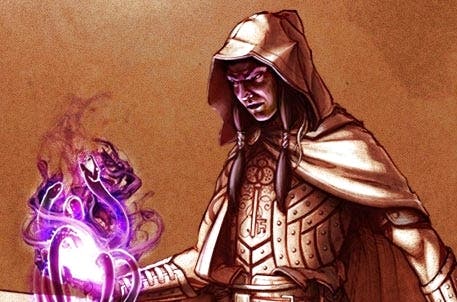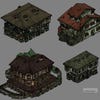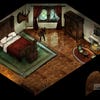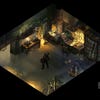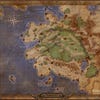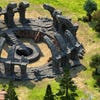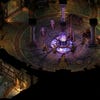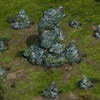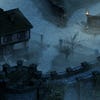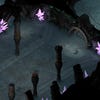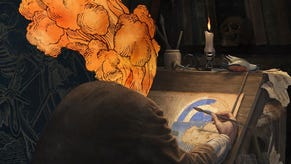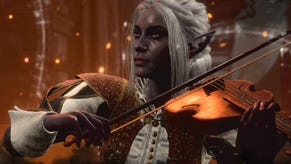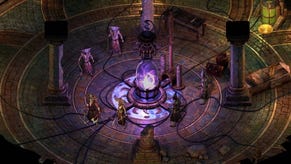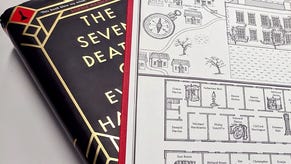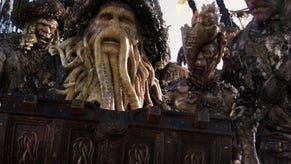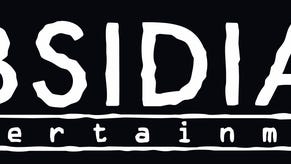Pillars of Eternity: What is a "mundane fantasy" RPG?
Obsidian on romance, maturity and more.
I spoke to Pillars of Eternity director Josh Sawyer recently and wrote a piece about the game's likely release date, about reaction to the first proper trailer and about this being the start of a series of games. But that wasn't all Josh Sawyer said, and I had leftover material I thought you'd appreciate reading.
We talked about the Stronghold base, romances, maturity, publisher freedom, a game editor and why the characters in the game look mundane. Here's what he said.
Why do the game's characters look mundane?
Pillars' characters are not flamboyant fantasy heroes, not wizards with pointy hats, not knights with elaborate armour. 'Why?' people asked after watching the recent trailer (embedded above). 'Why are the characters so... normal?'
"Some people might not like that our characters' proportions and outfits look comparatively drab and dressed down and not exaggerated," answered Sawyer, "but that's also kind of what the original [Infinity Engine] games were like. They don't look like [World of Warcraft] characters, they don't look like Diablo characters. They're not super-exaggerated.
"It was fantasy, but it was mundane fantasy"
Josh Sawyer
"It was fantasy," he added, "but it was mundane fantasy."
It stems from the work of a man called Keith Parkinson, who did artwork for Dungeons & Dragons publisher TSR back in the day.
"He had a philosophy to make the fantastical mundane," Sawyer recalled, "and to make the mundane fantastical, and so he achieved a really neat look in his D&D art, and so we've referred to that in a lot of cases, where you take something that's very fantastic and you make it a little more believable, and you take something that's very mundane and you dress it up so it's a little more fantastical."
We're not doing romances
Romances between you and fellow adventurers seem to be a de facto feature of role-playing games today. But Obsidian isn't doing them in Pillars of Eternity.
"We're not doing romances," said Sawyer, "but [the other characters] do have pretty detailed stories, they do have their own personal motivations and goals that sometimes align with yours and sometimes they don't. They interject into your conversations, they argue with you, they argue with each other."
And if you play on Expert mode, or if you enable character death, then followers can die. But Obsidian's "not real big on having characters die in scripted sequences". (Incidentally, if you don't like the given, storied crop of party members, you can make your own, using the Adventurer's Hall.)
Talk of romances led us onto talk of maturity, as "mature themes" are something Pillars of Eternity has. "And when we say mature themes we don't mean lots of..." Sawyer paused, searching for a phrase, "f***ing, right?"
"When we say mature themes we don't mean lots of... f***ing, right?"
Theoretically, Pillars of Eternity has the freedom to be as controversial as it likes - there's no publisher tutting loudly in the background while forecasting sales figures. But apparently publishers aren't as restrictive as they may sometimes seem.
"There are only certain publishers that I worked with in the past where they really get weird about that sort of stuff [controversial topics like religion]. Bethesda was actually pretty open to a lot of the stuff we did for Fallout," he said. "Granted, it was Fallout, but... We had Honest Hearts, which is essentially about post-apocalyptic Mormons, and they were fine with that."
Pillars of Eternity will delve into themes like "racism and more pervasive racism than just bold-faced racism", explained Sawyer, "like social racism or institutional racism". Class problems will be explored, and there will be an ongoing struggle between the religiously minded and the technological.
"One thing we did want to do with this setting that some publishers would be a little weirded out by is that this is not really a medieval game," he went on. "It's more of an early-Renaissance game. I did not want to make a game where the world was stuck in perpetual dragon-time, and where the golden time of high magic was behind everyone.
"We're entering the age of high magic right now, as people are learning more about animancy, which soul manipulation - it's like they're opening up new technology and it's raising a lot of questions about identity and mental illness and responsibility for one's actions and things like that. It's not necessarily super-common for fantasy.
"Internally we thought it was a good idea," he shrugged, "so we're just doing it - and we didn't have to really argue with a publisher about whether or not that really felt fantasy or not."
Your base, your Stronghold
Pillars of Eternity gives you, the player, a base - a base that can be upgraded over time and where events will happen. It can even be attacked. And it's called a Stronghold.
"Those events range from visitors coming to people mounting an attack against you to a travelling merchant or someone needs help," explained Sawyer. "And these little events are things you can send your adventurers [to do], or your companions that are not in the party - you can send them to go do them and get little rewards for them. It is a sort of game within a game, but you can manage it from anywhere in the world - there's actually a dedicated part of the UI for managing your Stronghold while you're out and about.
"If we made another Eternity ... we would still have a Stronghold that works in the same general way"
"When Tim Cain [key person from the original Fallout games] was implementing it, he had only implemented it essentially through text - there wasn't even the area, and he was still having fun with it."
You'll come across your Stronghold early on. But, said Sawyer, "When you find it, it's unsurprisingly not in great shape, and you have the ability to restore sections of it and change your roster of defenders and things like that."
Strongholds will also bestow resting bonuses dependent on what facilities you have there. Training Grounds will bolster the Strength stat, for instance, whereas a Library will bolster Lore. You'll also be able to grow ingredients in gardens there, get special offers from travelling sales people and... get filthy rich. Your Stronghold comes with all the surrounding lands, which are taxed. And you're the taxer.
Tim Cain went into more detail about Strongholds in a blog post.
There's a small chance you'll be able take your customised Stronghold into other Pillars of Eternity games (and there's a good chance there'll be more of those). But Sawyer seemed to like the idea of a new game being set in a new area.
Nevertheless, "If we made another Eternity, whether or not it's that Stronghold, we would still have a Stronghold that works in the same general way."
A Pillars of Eternity editor?

Plenty of role-playing games allow us to modify games - Skyrim, The Witcher, etc - or to make bespoke adventures within them. Some even give us developer-made tools. Pillars of Eternity won't, Sawyer said, but Obsidian does want the game to be as welcoming to modders as possible.
"We're not releasing a standalone editor ... but we're going to ... make user-made content as easy as possible"
"We're probably not going to have a standalone editor," he said. "We're going to continue to look into ways to make it easier for people to mod and create content. It does use Unity, so that is potentially a good starting point, but by the same token there's a lot of custom tools that we've written."
It'll be a case of 'what makes sense'. Table-based stuff should be easily editable because it's in a text file, but environments, on the other hand, are "really complicated".
"We're not releasing a standalone editor because we're using Unity, but we're going to look into exposing as much stuff as we can to make user-made content as easy as possible."
Project Eternity is coming out in the latter half of 2014, on PC (both Windows and Linux) and Mac.
If you need a little help completing the game, our Pillars of Eternity walkthrough is live now.
